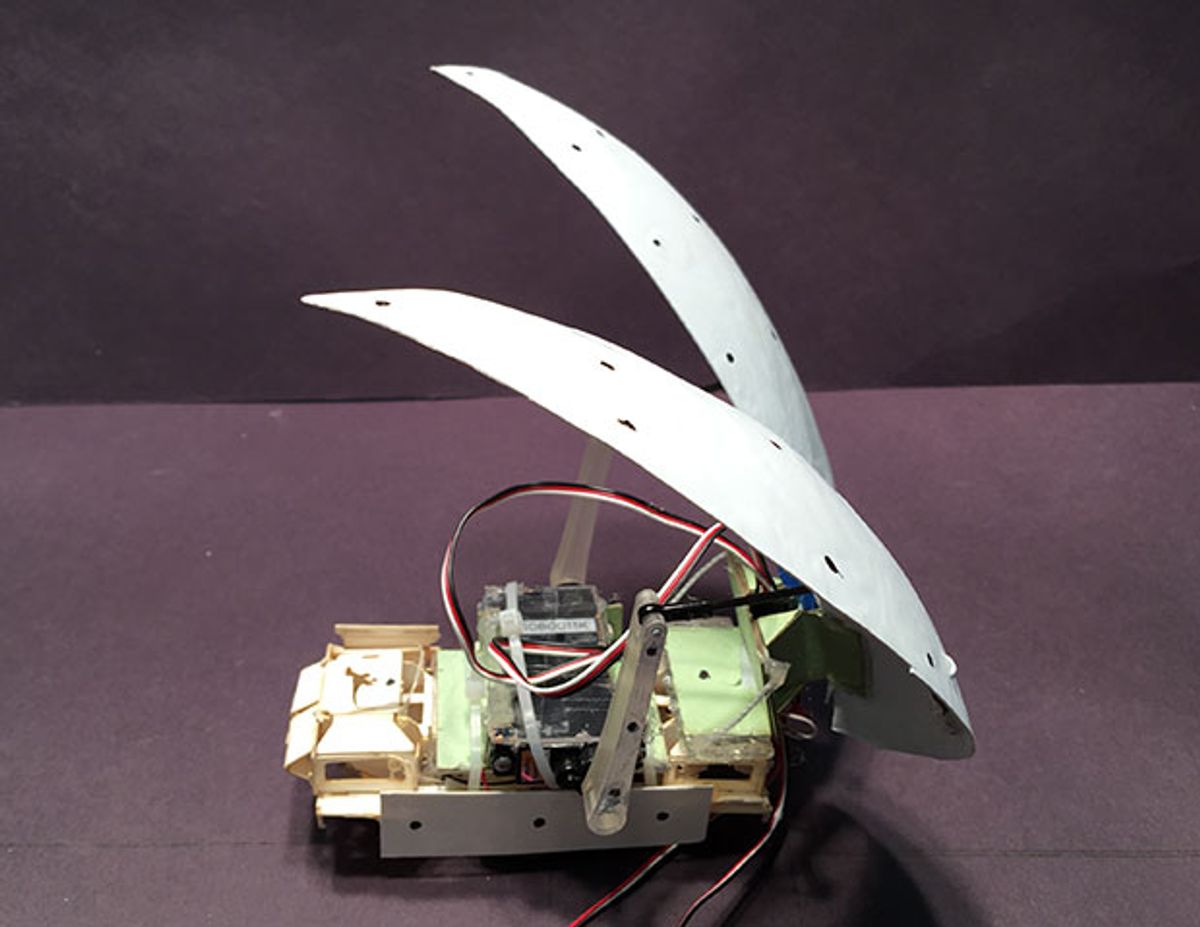For the last several years, we’ve been following closely (and somewhat uncomfortably) the development of robot cockroaches. Depending on your perspective, it’s either good news or bad news that they seem to be spreading. As roboticists graduate from the original home of the robot cockroach at UC Berkeley, they’re taking roachbot research everywhere.
Chen Li was a researcher at Berkeley’s Poly-PEDAL Lab and Biomimetic Millisystems Lab, where he gave little legged robots cockroach-inspired shells to help them push through obstacles. Li now has his own lab at Johns Hopkins University: the Terradynamics Lab studies “movement science at the interface of biology, robotics, and physics.” At IROS 2016, he presented a paper demonstrating a new trick for legged robots with shells: Ground-based dynamic self-righting, or flipping over using wing covers like a real insect does.
Li’s earlier research on small legged robots with rounded shells showed that the shells helped the robots get through obstacle courses, but because of the shape of the shells, if the robots flipped upside-down, they got stuck that way. Real cockroaches don’t have this problem, because they’re able to use their wings to right themselves. By cutting the shell in half and adding some actuators, Li gave his robots the same capability:
In order for this to work, the robot has to be fairly aggressive about it, quickly opening its wings as wide as it can. Interestingly, experiments also showed that if your robot is tired (i.e. low on battery), you still have a reasonable chance of a successful flip even at low opening magnitudes as long as you open the wings asymmetrically.
For more details, we spoke with Professor Li via email:
IEEE Spectrum: Why is this method of self-righting better than other methods of self-righting for small robots?
Chen Li: One major uniqueness of our study is that the wings are designed directly by modifying the earlier shell that helps traverse obstacles, and with future integration in mind so we can “morph” the body by opening and closing wings. This would allow it to realize multiple locomotor functions and capabilities, including obstacle traversal via terradynamic streamlining and self-righting. My lab at JHU is working on this integration for multi-functional capabilities.
In addition, the winged self-righting is dynamic, e.g. using large kinetic energy to overcome potential barriers. This can offer higher performance (higher probability of success and faster) than most existing righting mechanisms that use quasi-static shape change, center of mass shifting, passive rotation (being unstable when upside down), or self-reassembly.
Our systematic experiments also discovered how winged righting performance depends on wing opening magnitude, speed, asymmetry, and wing shape, so we can use these quantitative relationships as principles to control wing actuation and design appropriate wing shapes to guarantee righting and achieve the desired performance, as compared to the majority of righting mechanisms that do not yet have such principles.

When do you think we will be able to build a robot with similar capabilities to a cockroach (being able to run, fly, climb, and self-right)?
I think this will take quite a while. The mobile robotics research community is just beginning to work towards robots that are truly multi-functional in environments that are dynamic complex. For terrestrial locomotion, this is particularly challenging, as we are in lack of advanced locomotor-terrain interaction models analogous to aerodynamics and hydrodynamics. This is a new research area that my lab is focusing on and hoping to contribute to.
Other than these scientific principles that we still need to discover, there are also many engineering issues that remain to be solved, such as power limitations and materials and mechanisms that are as robust and resilient as those of animals.
What are you working on next?
Along the lines of this research, my lab is currently working on integrating wings and shells to enable multi-functional locomotion (e.g., first hold wings closed as shells for obstacle traversal, then, when flipped over, open them for dynamic self-righting). We are also developing a more robust winged self-righting robot as a physical model to further study the physics of dynamic self-righting.
More generally, my lab is developing new experimental tools and theoretical models to better understand the mechanics of locomotor-terrain interaction of both animals and robots in the real-world, and use such understanding to guide the design and control of terrestrial robots. We call this the new field of “terradynamics,” analogous to aero and hydrodynamics that help advance the design of aerial and aquatic robots.
“Cockroach-Inspired Winged Robot Reveals Principles of Ground-Based Dynamic Self-Righting,” by Chen Li, Chad C. Kessens, Austin Young, Ronald S. Fearing, and Robert J. Full from Johns Hopkins University, ARL, and UC Berkeley, was presented last month at IROS 2016 in South Korea.
Evan Ackerman is a senior editor at IEEE Spectrum. Since 2007, he has written over 6,000 articles on robotics and technology. He has a degree in Martian geology and is excellent at playing bagpipes.



